
There are a wide variety of bicycle brakes on the market. Chances are you have purchased a bike in the past without realizing exactly what type of brakes are on your brake. Maybe you noticed that if they were rim brakes or disc brakes, but do you know if they were caliper brakes or cantilever brakes? Could you distinguish the two from one another?
By the end of this article, you will be able to tell them apart visually, understand their mechanical differences and, as a result, the appropriate applications of each.
Table of Contents
Basic Mechanism of Braking
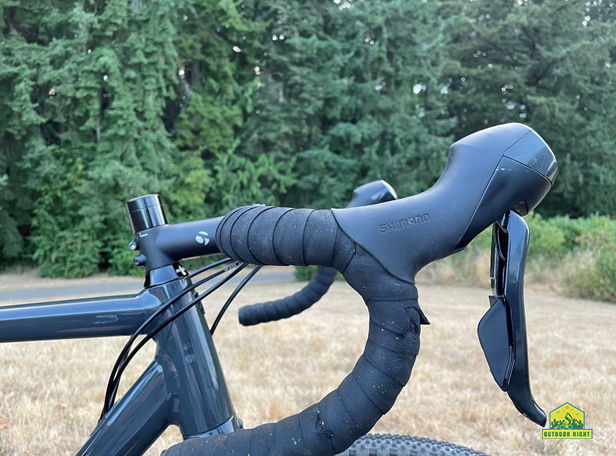
All types of brakes rely on the same fundamental mechanisms for deceleration, whether they are rim brakes, disc brakes, or even the brakes on your car.
With respect to bicycle brakes, the mechanism begins at the brake levers. The rider applies pressure to the brake levers on the handlebars (or to the pedals, in the case of drum brakes). This force is transmitted through cables, chain, or hydraulics and transmitted to the brake pads.
As the brake pads engage, they apply pressure to the braking surface, which is the rims, the discs, the drum, or the wheel itself. This friction, combined with the tires’ friction on the riding surface, brings the bicycle to a stop.
The mechanical process of braking results in energy loss in the form of heat. This heat is dispersed more effectively if the braking surface is larger, but excessive braking can result in build up of heat. For example, a downhill mountain biker may find their disc brakes to be quite hot at the end of a long run involving a lot of braking. It is good to exercise caution before touching a braking surface mid-ride.
Rim Brakes
The function of rim brakes is relatively self-explanatory. They operate by the brake pads squeezing the rim on both sides of the wheel to slow the bicycle.
Rim brakes are actuated by the rider squeezing the brake levers on the handlebar. The pressure is transmitted to the brake pads through cables, almost exclusively.
One of the most important benefits of rim brakes is that they are the most lightweight option for brakes. Since rim brakes apply pressure directly to the rim itself, no additional braking surface needs to be added to the bicycle. Only the calipers, levels, and cables must be added. The result is a lightweight braking package that has proven effective for many years.
Caliper Brakes
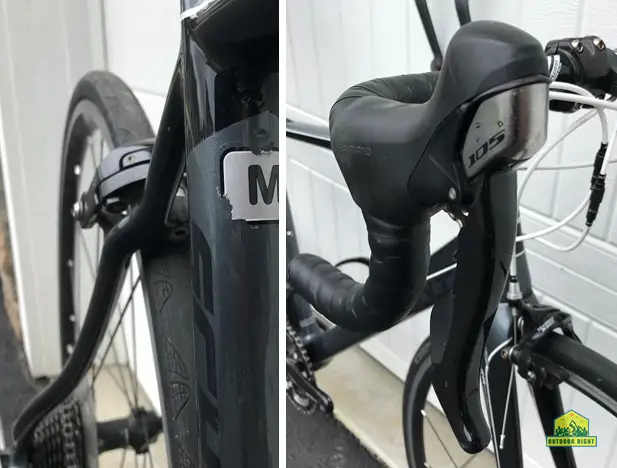
Caliper brakes are a rim brake that mounts directly to the frame or fork of the bike. The front brake mounts to the fork, and the rear brake mounts to the frame.
Caliper brakes are actuated by a single cable and use a self-contained mechanism to apply pressure to both sides of the rim.
The nature of the self-contained mechanism requires the tire to pass through the brake pads of the caliper. This limits the tire sizes for which caliper brakes can be used.
As a result, caliper brakes are most commonly found on road bikes and some higher-end fitness hybrid bikes, which utilize a small range of narrow tires and aim to reduce weight as much as possible.
Cantilever Brakes (Center Pull)

Cantilever brakes function similarly to caliper brakes, being actuated by a single cable to engage the brakes.
Cantilever brakes also mount to the frame and fork. However, they are constructed of two separate brake arms, one mounted on each side of the rim.
One short cable connects the left and right arms, and this cable sits in a saddle that is attached to the primary cable which runs to the brake lever. While there are technically two cables, the actuation of this single, primary cable is what engages the brake.
The purpose of the short cable and saddle setup allows the brakes to be quickly detached for simple installation and removal of the bicycle wheels.
The benefit of independently mounted brake arms is that they can be quickly detached from one another, creating a large gap between the brake pads to accept much wider tires than can be used with caliper brakes. They can then be quickly reattached with the cable and are ready to ride.
As a result of the wider tires than can accept, cantilever brakes are commonly used on cyclocross bikes and other off-road hybrid bikes. An added benefit is that it is easy to maintain cantilever brakes and swap brake pads quickly.
V-Brakes

V-brakes use a term popularized by Shimano but are formerly known as linear-pull or direct-pull brakes. They resemble cantilever brakes with a modified mechanism for engaging the brakes, designed to improve upon the performance of cantilever brakes.
- Efficient design with low operating Forces
- Designed for smooth and quiet stopping power
- 107 mm arch
- X-type v-brake
- Mudguard prevents excess accumulation of mud
V-brakes mount to the frame and fork the same way as cantilever brakes, with separate mounts and arms for each side of the rim. They are also engaged by the pull of a single cable.
However, V-brakes connect the two arms directly to the primary cable coming from the brake lever. The cable is clamped firmly to one brake arm, and the cable housing sits in a shroud on the other brake arm.
The dual-attachment setup squeezes the brakes equally, applying pressure on both sides of the rim simultaneously. This design also allows the cable housing to be effortlessly removed from the shroud, allowing for the same ease of wheel removal and installation.
The long arms of the V-brake provide excellent leverage, resulting in effective braking power. V-brakes provide reliable stopping power in a lightweight, user-friendly package.
V-brakes are commonly used on off-road hybrid bikes and some mountain bikes, due to their ability to accept wider wheels. The simple mechanism and protective cable housings have made the V-brake the rim brake of choice for most bicycles that previously would have implemented cantilever brakes.
U-Brakes

The U-brake is similar to the V-brake in its mechanism and actuation. It relies on separate pivot mounts on each side of the rim and is actuated by a single cable that connects both brake arms.
The arms of the U-brake cross one another, creating the “U” for which the brake is named, and relies on pivots that are above the rim and brake pads. This results in the cable pulling the arms in the opposite direction than on a V-brake, but the effect is the same.
U-brakes were quite common on mountain bikes in the 90s, as it provided a clean look and easy cable positioning and adjustment.
However, U-brakes have since fallen out of popularity. Mountain bikes are equipped with disc brakes almost ubiquitously, but U-brakes can still be found on BMX bikes and freestyle bikes. The U-brake is a relatively narrow rim brake, so it minimizes the risk of a rider’s clothing or body interfering with the brakes.
Disc Brakes

Disc brakes diverge from the brakes mentioned above in both their design and performance. Whereas rim brakes are operated by applying pressure to the rims themselves, disc brakes clamp onto a rotor that is fixed to the wheel. The braking forces are applied much closer to the axle of the wheel.
Disc brakes require particular hubs, rims, and frame/fork that are compatible with disc brakes. They still rely on two brake pads applying pressure to create friction, but they are capable of generating substantially greater pressures.
The result is a brake that is much more reliable and capable than rim brakes. The pads on rim brakes can often get coated in dust and mud, delaying their braking speed and power. Rim brakes also can be negatively affected by water, suffering from reduced friction in wet or rainy environments.
Disc brakes shine wear rim brakes struggle. The substantial forces applied by the pads immediately scrape clean the rotor from any water, mud or dust that has collected. This provides reliable and exceptional stopping power in the dirtiest of environments.
Another benefit of disc brakes is their relative ease of operation. They require less force to be applied to the brake levers in order to engage the brakes with a large output force. This allows brakes to be operated with a single finger, which proves beneficial for all cyclists, especially mountain bikers during technical descents.
Disc brakes are also more immune to heat than rim brakes, making them the preferred choice for long, steep descents. Disc brakes simply outperform rim brakes in every situation, providing the most powerful, reliable braking system for any terrain and environment.
The drawback to disc brakes is that their exceptional performance requires a trade-off: weight. Disc brakes are heavier than almost all rim brake options. In addition to the brake mechanism, disc brakes require a rotor to be mounted to each of the bike’s wheels, greatly increasing the overall weight of the bike.
Despite the additional weight, disc brakes are now one of the most commonly brake systems for all bikes. They are the standard for mountain bikes and off-road riding, and they are even making their way onto road bikes due to the improved safety that results from their reliability.
Hydraulic Disc Brakes

Hydraulic disc brakes represent the paramount of braking performance. Rather than relying on cables to transmit the braking forces, like we saw above with the rim brakes, these rely on hydraulic fluid to transfer the force from the brake levers to the pads. The system is quite similar to the brakes in your car.
These hydraulic brake lines look like cable brake lines, except with a slightly larger diameter. The mechanical advantage of hydraulic fluid is astronomical compared to brake cables. The hydraulic fluid allows the force applied at the lever to be multiplied at the brake pads, generating unparalleled braking power.
The resulting hydraulic disc brake system is easy to operate and makes it easy to regulate braking. Hydraulic disc brakes are far above all other brakes when it comes to their reliability, being immune to weather conditions.
- 🚴♂️- Left or Front and Right for rear;
- 🎁 - Front 800mm and Rear 1500mm ( A Pair);
- 🌟 - Pre-installed MT200 Disc brakes with pre-belt hose, and ready to install...
- 🏫 -Product well packaged in JGbike retail package.
- 🤟 - Match DIY Options, find rotors or bleeding kits for your brakes, find mtb...
Adjusting to hydraulic disc brakes may take a few rides because they deliver such great power. You may find yourself over-braking or braking too suddenly the first few rides, but once you have adjusted, you will undoubtedly appreciate the powerful system.
It is worth noting that hydraulic disc brakes are not completely maintenance-free. Over time, hydraulic fluid goes bad, and the system needs to be bled and the hydraulic fluid replaced. Failure to do so can result in sticky brakes that do not feel as responsive. Even worse, degraded hydraulic fluid becomes corrosive and can cause further damage.
It is important to keep up with preventative maintenance for your hydraulic disc brakes. You should get a tune up at least once a season anyway, so incorporate a brake bleed with the rest of your maintenance, and it should not prove to be any additional hassle. It is well worth the incredible performance provided by hydraulic disc brakes.
Mechanical Disc Brakes
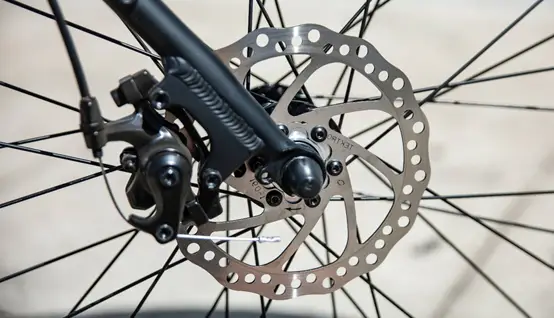
If you aren’t sold on hydraulic disc brakes due to the required maintenance or the higher price point, you can consider their less-expensive cousin: the mechanical disc brake.
Mechanical disc brakes combine the mechanisms of hydraulic disc brakes and rim brakes. They utilize rotors mounted directly to the wheels, like hydraulic disc brakes, but they rely on cables to transfer the forces from the brake levers to the brake pads.
The benefit of mechanical disk brakes over rim brakes is that they provide more braking power with less applied force, when compared to rim brakes. They are not as powerful as hydraulic disc brakes, but, nonetheless, they offer superior braking performance and immunity to wet and dirty riding conditions.
Similar to hydraulic disc brakes, mechanical disc brakes are a heavier braking package than rim brakes. They are less expensive than hydraulic disc brakes. From a maintenance standpoint, they are more familiar to home mechanics who are familiar with rim brakes, which may be an added benefit if you do your own maintenance.
All in all, mechanical disc brakes offer excellent performance. They fill the gap between rim brakes and hydraulic disc brakes by providing a high-performance package, though slightly heavier, at an approachable price.
Drum Brakes
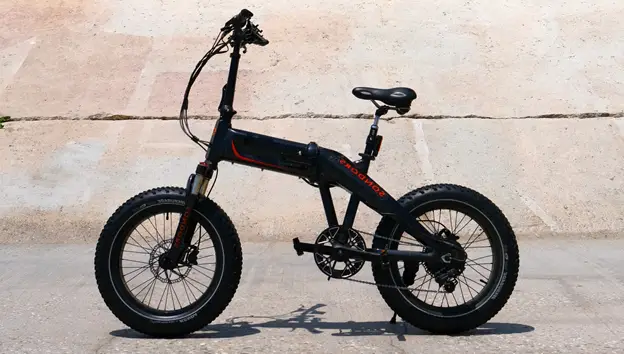
Drum brakes are much less common than disc or rim brakes, but they are still found on some commuter bikes. They rely on levers and cables for operation, but they are typically engaged by a band. The band is a flexible material that tightens around the drum when a brake force is applied.
Drum brakes are often internal to the rear hub of the bicycle. This makes it more reliable than rim brakes in the rain and sand, hence why it is often used on commuter bikes and beach cruisers. However, drum brakes are significantly heavier than both rim brakes and disc brakes.
The most common type of drum brakes is the coaster brake, which is applied by applying backwards force on the pedals. This is common on kids’ bikes, single-speed commuters, and folding bikes, because they do not require cable connections and are the lowest maintenance option available.
Conclusion
Although bicycle brakes have been in use for over one hundred years, they continue to evolve and improve. Innovations such as the disc brake have created high-performing brake systems that are immune to poor weather and dirty riding conditions and provide a new level of reliability.
The type of bicycle brake that is best for you will depend on your budget, how you ride, and the level of maintenance you are willing to perform. Personally, I think both hydraulic and mechanical disc brakes are the best options on the market and are worth the weight sacrifice.
I have been caught out in the rain on road rides many times, and rim brakes did not inspire confidence. Their performance was significantly hindered, and I almost ended up in the middle of an intersection on a steep downhill more than once.
After the scary experiences above, I made the transition to hydraulic disc brakes and have never looked back. Since transition, not once have I struggled to maintain control or stop my bike safely because of the brakes themselves, and that includes road rides, gravel rides, and mountain bike rides.
With the guide above, you should be appropriately geared up to select the best brake option for you. Ultimately, I think disc brakes are far and above the best option, regardless of the price or required maintenance. After all, you really can’t put on a price on safety.
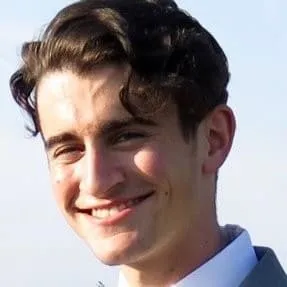
Mitchell Turk is outdoors enthusiast with a lifelong passion for bicycling. He previously worked at his local bike shop before entering the world of engineering, and he may even enjoy geeking out over bike tech more than riding his bike!
Originally a roadie, Mitch dabbled in mountain biking for a couple years and then jumped on the gravel bike bandwagon. He now spends his free time seeking out gravel rides and weekend-long excursions. His ideal outing combines biking, hiking, and climbing for a whole-mountain adventure.


